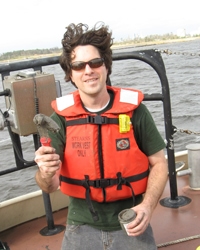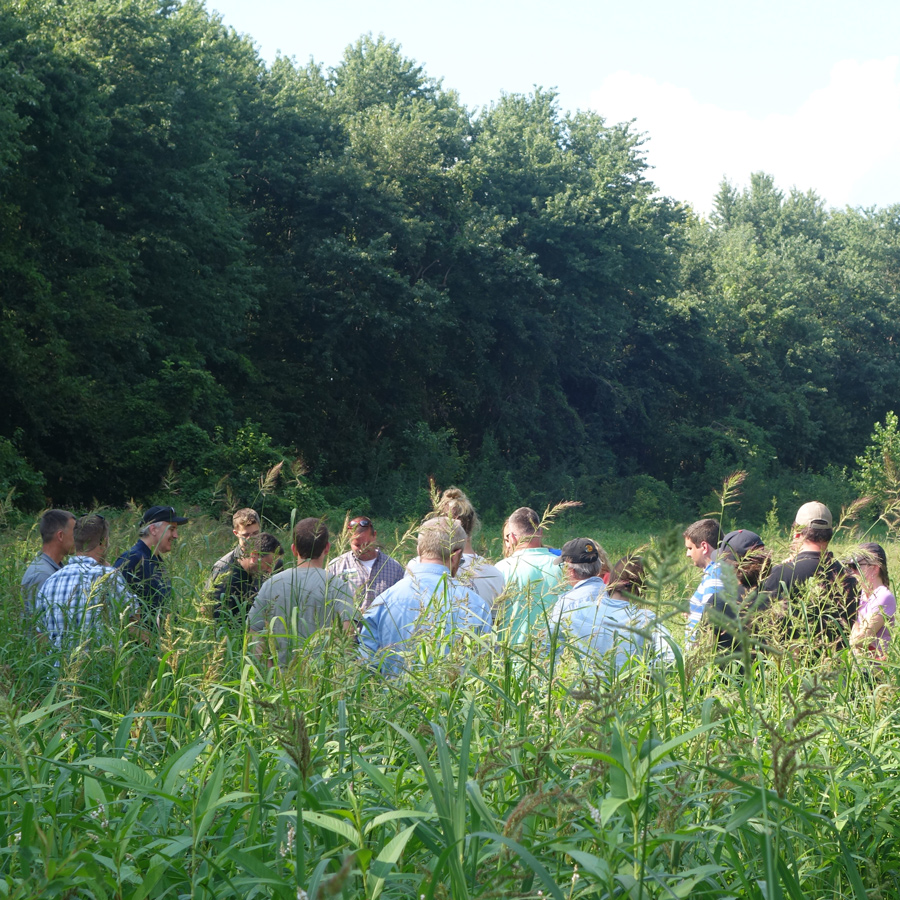Dating to the late 1860’s, Baptiste Collette Bayou was a small canal that extended between the Mississippi River and the historic Breton Island Sound. In a series of storm-related events and USACE dredging authorizations beginning in the early 1900’s, a sub-delta that had developed covering as much as 20 square miles by 1959 had begun to deteriorate due to considerable subsidence and ponding. The inception of the channel occurred in 1968 from a Congressional Authority to enlarge the waterway. Work began with emergency dredging events in 1972 and 1973 to provide relief to barge traffic on the Gulf Intracoastal Waterway while the Inner Harbor Navigation Canal lock was closed. The first bird island was born of this emergency maintenance.
Construction of the bird islands began in 1978 when the New Orleans District (CEMVN) began to regularly maintain Baptiste Collette (Figure 1). They focused their efforts on creating island habitat that could serve as nesting habitat for a wide variety of shorebirds. Yet the Baptiste Collette Bird Islands created by the beneficial use of dredged sediment are subject to storms and wave energy from the open Gulf of Mexico. The aerial image below shows the bayou as it existed in 1978 soon after beneficial use activities began in 1977. Sediment placement to create habitat on the west side of the jetty channel began in 1988.

Project Description
Sediment beneficial use from maintenance of the Baptiste Collette Bayou channel occurs on an annual basis with the placement of dredged sediment in shallow open water either on the east or west side of the channel. The unconfined placement is designed to create wetland habitat adjacent to the waterway’s jettied entrance and islands seaward of the jetties that are suitable for colonial nesting seabirds. Use of dredged sediment to create or restore coastal habitat considered innovative in the late 1970’s has become current state-of-the-practice. Following creation of an island, CEMVN periodically places sediment from subsequent maintenance activities to prevent vegetative succession, keeping the island relatively vegetation-free for colonial nesting seabirds that prefer bare sand for nesting. In cases where pelican nesting has been observed, vegetation is left undisturbed to encourage return during future nesting seasons. The most recently constructed “Gunn Island” was established in 2014 to accommodate shoaling further out in the bar channel and to avoid enlarging the existing islands while maintaining sufficient spacing between them. Recent examples of beneficial use activities on Gunn Island include placement of 836,00 cubic yards of sediment in 2018 to achieve a +6.0 feet MLG elevation, creating roughly 12 acres of bird nesting habitat. In 2019, 943,000 cubic yards of dredged sediment was placed on Gunn Island, creating an additional 56 acres of bird nesting habitat. Figure 2 shows the bird islands as of 2019.
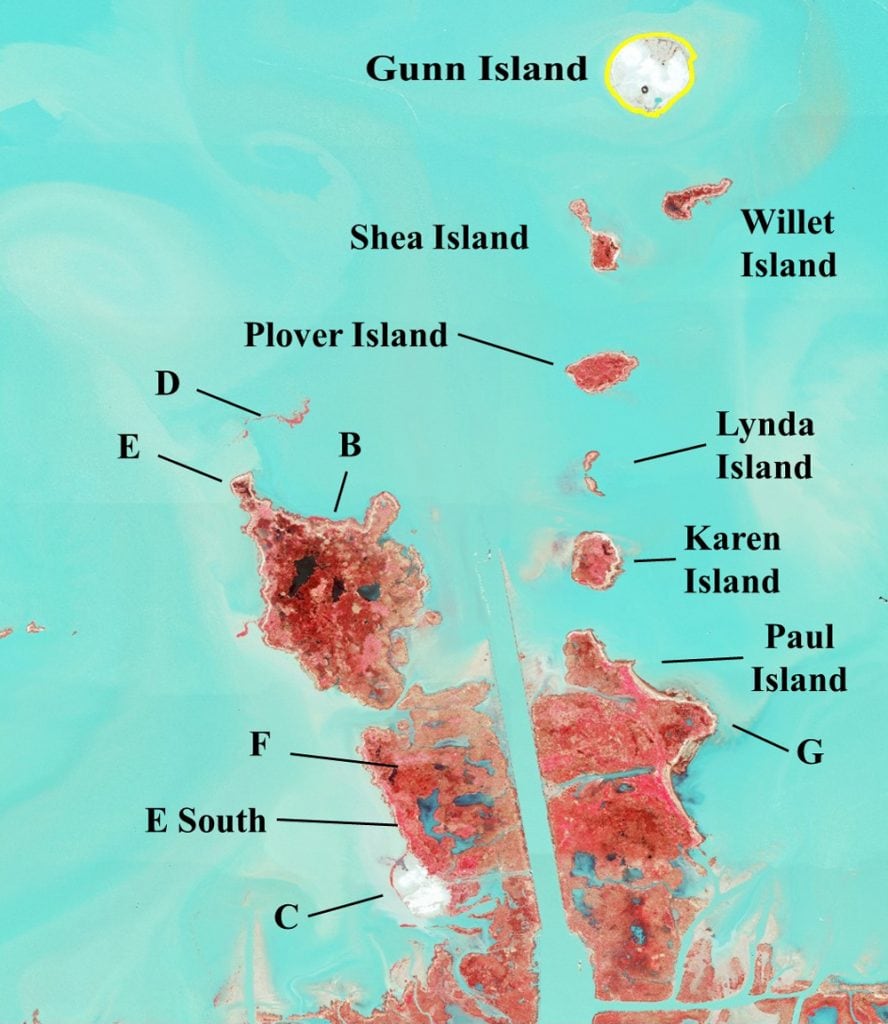
Monitoring
Nesting surveys were performed regularly prior to 2000 to develop data and other supporting evidence to promote the recognition of the islands as beneficial by the resource agencies. Surveys have relied on ground observations to estimate numbers of birds utilizing the island habitat for nesting and other purposes. Created habitats include marsh, scrub-shrub, bare land, and beach. Seventy-six species of salt and freshwater plants have been documented on these sites. Additional monitoring is recommended to more completely understand the effectiveness of dredged sediment placement for creating the islands and to quantify the successes of ongoing efforts. An understanding of how the seabirds respond to the placement activities in Baptiste Collette Bayou is needed to determine the broader ecological and other benefits of sediment placement strategies so these best practices can be optimally applied here and elsewhere.
STUDY RESULTS
The results compiled on the Baptiste Collette Bayou Bird Islands indicated that the islands created using dredged sediment have been providing meaningful nesting habitat for a variety of seabirds since observations began in 1986. That year, several thousand birds were observed nesting on Plover Island (Figure 2), including Caspian Terns, Royal Terns, Black Skimmers, Gull-billed Terns, and Sandwich Terns. The island was designed to use sediment beneficially specifically for the purpose of utilization by seabirds for nesting and other purposes. In August 2020, the Louisiana Department of Wildlife and Fisheries recently observed over 50,000 seabirds nesting on Gunn Island (Figure 2) composed of approximately 75% Royal Terns, 15% Caspian Terns, and the remaining 10% were comprised of Black Skimmers, Gull-billed Terns, and Sandwich Terns (Figure 3). Contributions to the success of the islands to serve as nesting habitat are attributed to a combination of remoteness to discourage terrestrial predators, small size to limit the spread of avian disease, presence of bare sand, and elevation sufficient to prevent tidal and storm inundation.
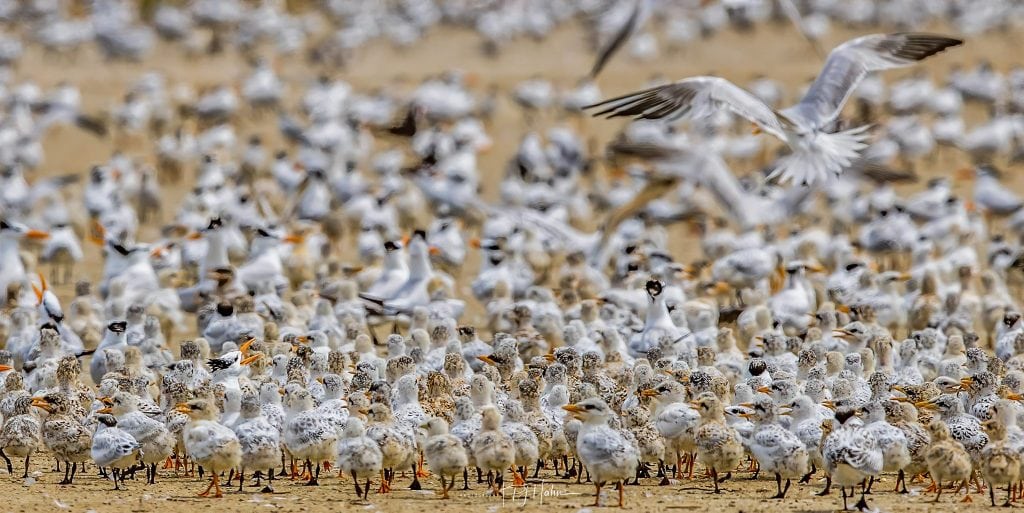
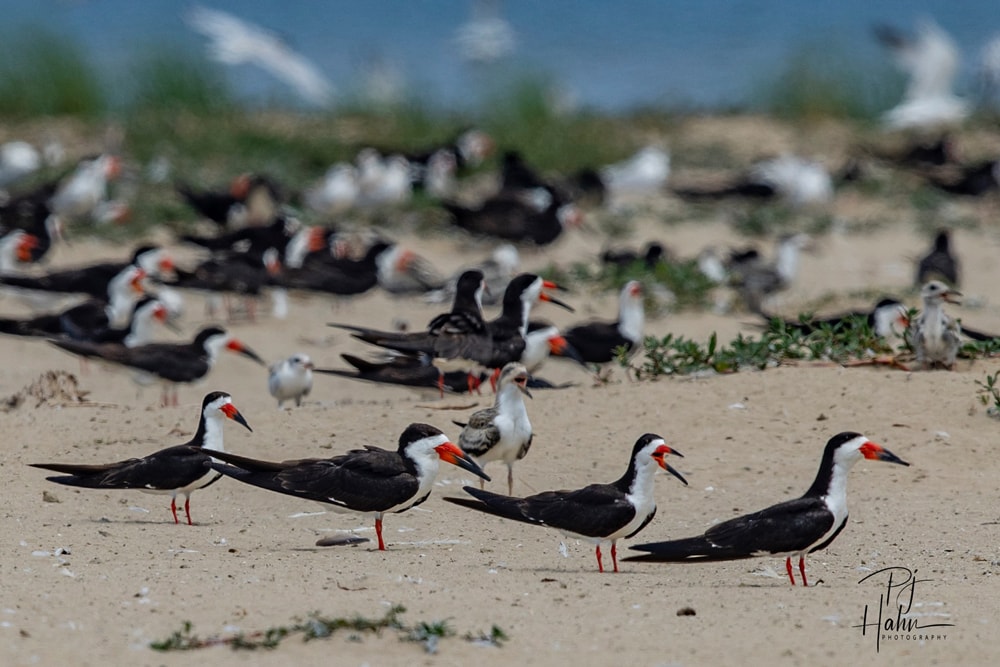
Using an adaptive management approach to design and construct additional islands has proved largely successful to the present day. One such example is to maintain at least a 1,200-foot gap between the islands to reduce the likelihood of predators reaching the outer islands. The islands’ exposure to the open waters of the Gulf of Mexico result in degradation of the islands over time, yet the availability of sediment dredged from the channel offers a reliable and sustainable supply of clean sediment for maintaining the islands structure and multiple environmental and other benefits.
Project Significance
In 2020, as part of the Baptiste Collette Bayou Bird Island chain, Gunn Island hosted the state of Louisiana’s largest nesting tern colony that was believed to have been displaced from the low-lying Breton Island by tropical storm overwash. Since the initial construction of the Baptiste Collette navigation channel, over 1,000 acres of coastal habitat have been created by placement of dredged material during routine maintenance dredging events. The bird nesting islands have been identified as a U.S. Important Bird Area because of the essential habitat they provide to significant numbers of breeding Caspian and gull-billed terns and roosting pelicans. Five species of terns have been recorded as breeding on these islands. Research to document ecosystem services at sites like these will play a meaningful role in determining the efficacy and optimal use of such beneficial use applications in the future.

